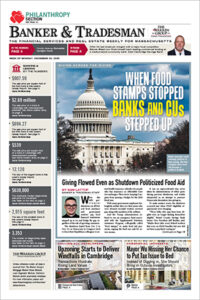The Federal Reserve is working on developing a model to help financial institutions and regulators analyze the effects climate change could have on the industry and the economy.
Lael Brainard, a member of the Federal Reserve’s board of governors, said the Fed is considering climate scenario analysis as a tool to help model the possible financial risks associated with climate change. The model will also assess the resilience of financial institutions and the financial system to these risks, Brainard said in a virtual speech Thursday at the 2021 Federal Reserve Stress Testing Research Conference hosted by the Federal Reserve Bank of Boston.
Brainard said both the physical effects and the transition to a sustainable economy will impact the future financial and economic consequences of climate change.
“So it is important to model the transition risks arising from changes in policies, technology, and consumer and investor behavior and the physical risks of damages caused by an increase in the frequency and severity of climate-related events as well as chronic changes, such as rising temperatures and sea levels,” Brainard said, according to the text of the speech.
The scenario analysis should help with estimating possible effects on individual financial institutions as well as on financial markets more broadly, Brainard said. She added that taking a systematic approach to modeling the effects of climate-related risks across the financial system could help with risk management within individual financial institutions and more broadly.
Brainard acknowledged that the first attempts at climate scenario analysis could be rudimentary, but she added that starting down the path “will help with risk identification and suggest useful lessons to inform subsequent improvements in modeling, data, and financial disclosures.”
She noted that the first stress tests at large banks, a process that came out of the 2007-09 financial crisis, provided a solid foundation for building the stress-testing program over the next decade.
“Although we should be humble about what the first generation of climate scenario analysis is likely to deliver, the challenges we face should not deter us from building the foundations now,” Brainard said
The Fed will take several steps in developing the climate scenario analysis, including looking at approaches taken in other countries, using traditional economic concepts to estimate the effects of transitioning to a low-carbon economy, and mapping out the economic consequences of the physical risks from climate change.
The Fed will also consider how climate change affects different regions and economic sectors, projecting potential losses while also capturing the possibility that climate-related risks could intensify.
While both the Fed and financial institutions are already gathering data to understand climate-related risks, Brainard said gaps in the data still need to be addressed.
“Current voluntary climate-related disclosures are an important first step in closing data gaps, but they are prone to inconsistent quality and incompleteness,” Brainard said. “Without harmonization of the definitions and methods underlying these disclosures, it will be challenging to make comparisons across firms and exposures.”
She said having consistent, mandatory disclosures would be vital for measuring, monitoring and managing climate risks across firms, and she pointed to the role the Securities and Exchange Commission would have in developing this process.








